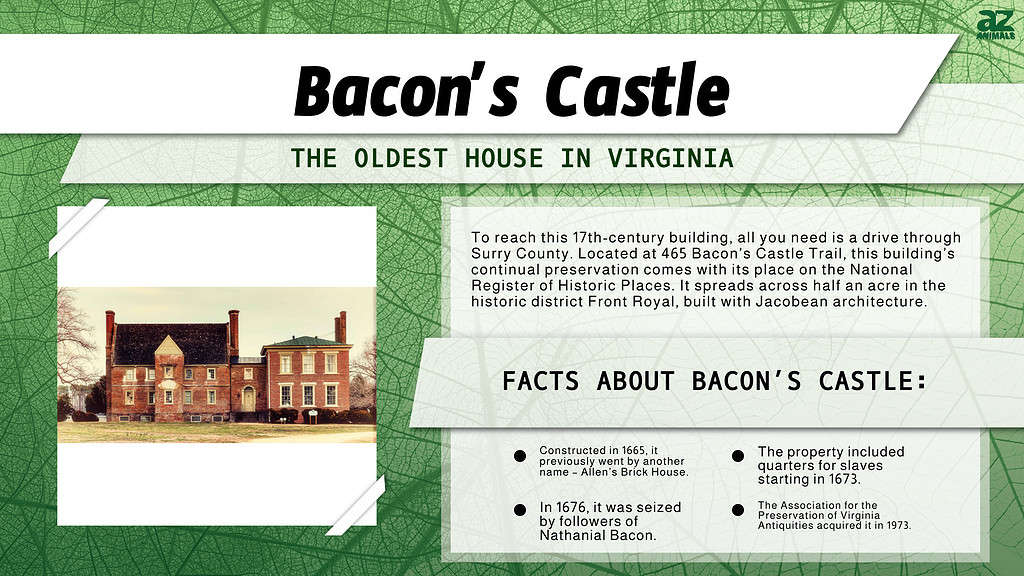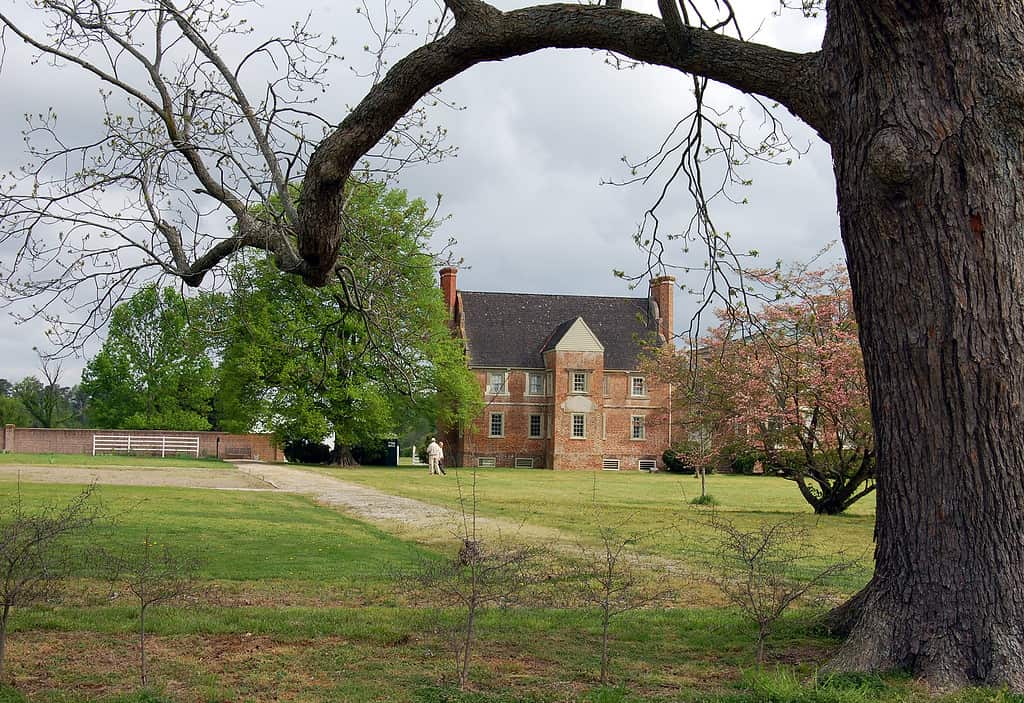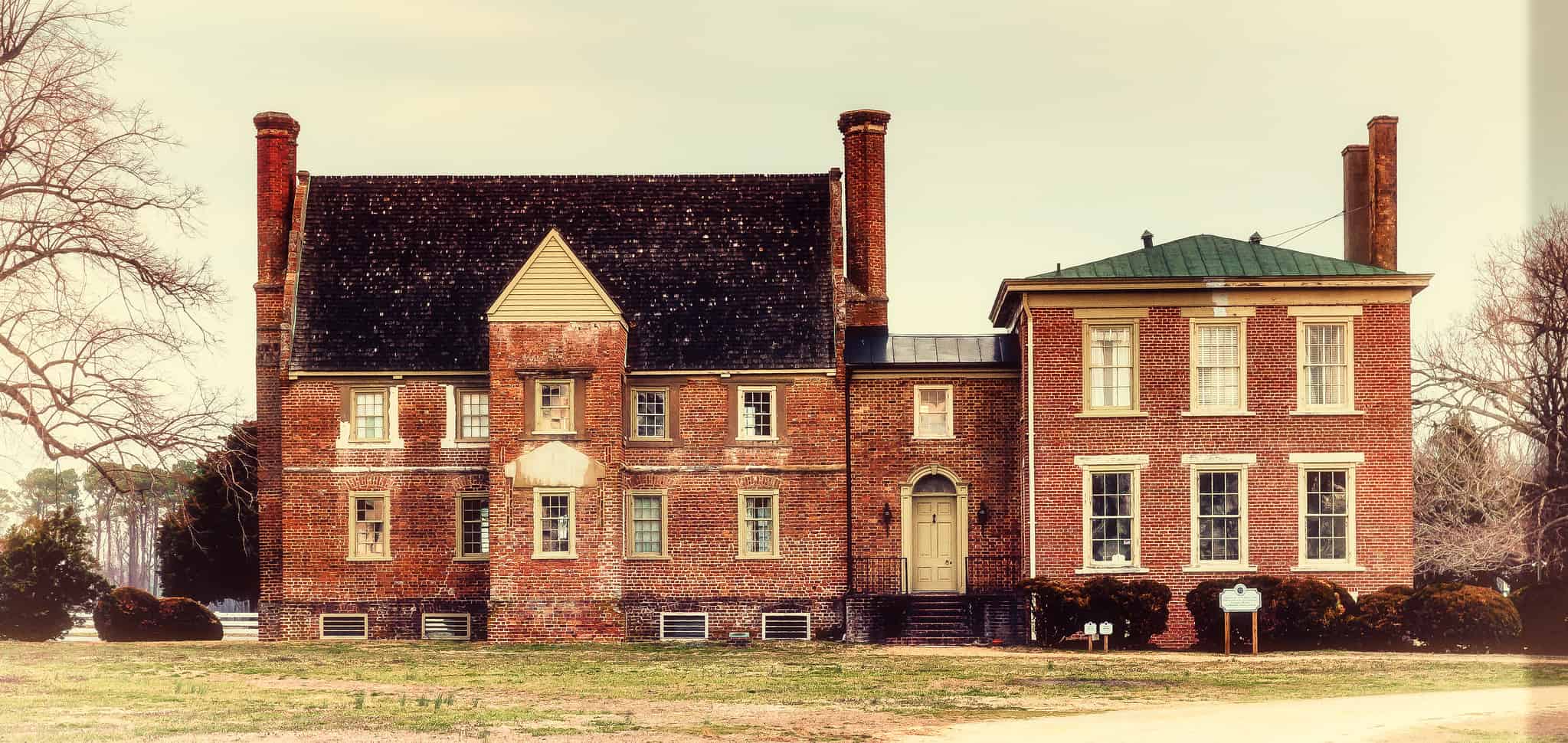Virginia started as the first English colony of the future United States in 1607. While the world continues to change, the Commonwealth continues to preserve some structures that predate the nation’s independence. Historical tours are a part of Virginia’s tourism, including lighthouses, private homes, and churches. The oldest home in Virginia is Bacon’s Castle, making it also the oldest brick dwelling in the state.
As the oldest structure in the United States, it is one of the most significant historical sites of the last 400 years. It marks the start of the United States in one of the lushest landscapes in the South. Let’s take a look at what makes it so special.

Where is Bacon’s Castle Located?
To reach this 17th-century building, you only need a drive through Surry County. Located at 465 Bacon’s Castle Trail, this building’s continual preservation comes with its place on the National Register of Historic Places. It spreads across half an acre in the historic district Front Royal, built with Jacobean architecture.
If you take a drive from Virginia’s state capital (Richmond), you need to get on VA-10 to reach Surry County, which takes just over an hour with normal traffic. For the last couple of minutes of the drive, switch to State Route 617 until you reach the property. The Jamestown-Scotland Ferry brings you from the end of your trek to the estate.
Bacon’s Castle and the Use of Jacobean Architecture

Only a small fraction of the historic buildings in Virginia use Jacobean architecture.
Apart from its longevity, Bacon’s Castle features Jacobean architecture. This style emerged in the second phase of the Renaissance, named for King James VI and I. It featured carvings by German and Flemish professionals rather than Italian carvers. It is reminiscent of the Elizabethan style that directly preceded it, though the new design included more formal planning and elevation. Flat roofs and round arches pair with a classical home at the time, but the style’s popularity didn’t last long.
History and Origins of Bacon’s Castle
Constructed in 1665, Bacon’s Castle previously went by another name – Allen’s Brick House. Arthur Allen built it along the James River, giving him a home with his wife, Alice. As a successful merchant and Justice of the Peace, his son inherited the house upon his death in 1669. The property included quarters for slaves under his son’s ownership, starting in 1673.
In 1676, followers of Nathaniel Bacon – a frontiersman and leader of several rebels – seized it. For the next 3 months, they fought for their cause, rotating leadership among William Rookings, John Clements, Joseph Rogers, and Arthur Long. When Bacon died, primary leadership switched to Joseph Ingram, and he could not maintain their progress. At the end of the rebellion, the house started to be called Bacon’s Castle instead. Though local rumors suggested that Bacon once lived there, there’s no evidence to show that he ever set foot within its walls. Historians also debate about the timing of the changed name, but the earliest use was in the Virginia Gazette in 1769.
Through the years, this property changed hands from one generation to the next. When the federal government emancipated slaves, the functionality of Bacon’s Castle suffered. John Hankins sold the 1,200-acre property before his death to pay off a debt. William Allen Warrant took over ownership in 1880, selling it in 1909 to their son Charles Allen Warren. Then, Walker Pegram Warren inherited it.
The Association for the Preservation of Virginia Antiquities acquired it in 1973 after the tragic deaths of Walker Pegran Warren and his wife in a car accident. Since then, the Association for the Preservation of Virginia Antiquities became Preservation Virginia. While the association only purchased 40 acres of the estate, Virginia State Senator Garland Gray acquired the rest before passing it on as his son Elmon T. Gray’s inheritance.
What is Bacon’s Castle Like Today?
Since Preservation Virginia’s acquisition, Bacon’s Castle continues to be preserved and protected. Guests are welcome to visit the property as a house museum and historical site. If you want to check out the property with the full tourist experience, the hosts of the building offer a 45-minute guided tour. For anyone who wants to experience it on their own, the hosts also offer a cell phone tour, guided by a numbered path and an audio recording about the property.

Reenactors transport guests back to the colonial days, immersing them in the historical significance of Bacon’s Castle.
Visitors who want to tour the house can visit on Friday, Saturday, or Sunday until 5:00 pm. Visiting hours start at 10:00 a.m. on Friday and Saturday, but Sunday’s hours don’t begin until noon. From Memorial Day to Labor Day, the property is also open for tours on Mondays from 10:00 a.m. to 5:00 pm. When you visit, you need to choose the date of your visit when buying tickets.
Additional Places to Visit in Surry County
Chippokes State Park

To help locals learn about the history of the properties within the park, the owners opened the Chippokes Farm and Forestry Museum in 1990, offering an open-air farm museum.
Sitting on the south side of the James River, Chippokes State Park is a part of the Captain John Smith Chesapeake National Historic Trail. The plantation gets its name from the leader of one of the local Powhatan tribes of the area, which lost this land to colonists in 1619. The preservation of the historical buildings within the park offers a glimpse of what Tidewater, Virginia, was like until 1950. With multiple educational displays, patrons get a peek at the meaningful influence of forestry in this economy in today’s world.
To provide a better understanding of Virginia’s history, part of the museum includes living exhibits with heritage breed animals. Touring the museum can be done independently, though the properties are only open from March to December.
Jamestown-Scotland Ferry

The ferry transports up to 16 tons on its short journey across the river, offering a free way to drive your car or truck across the peninsula.
The only way to visit Bacon’s Castle is with a ride aboard the Jamestown-Scotland Ferry. Operating every day of the year, this ferry has locations in Surry and Williamsburg to pick up passengers. It carries up to 16 tons, and riding the ferry is completely free. With over 90 employees, it’s the only ferry in the state that runs 24 hours a day and is covered by the state. The ride only takes about five minutes, offering a full view of the James River.
Historic Jamestowne

To educate locals about Virginia’s rich history, the Historic Jamestown Settlement shows reenactments of the battles and town life for colonists.
If you want to take a quick drive out of Surry, Historic Jamestowne awaits you with reenactments and tours. The entire area is surrounded by the James River, taking you along a path of several historical sites. The weekly schedule shows the daily events hosted here. Regardless of the schedule, each day gives you a peek at statues of John Smith, Pocahontas, and other monuments. The New Towne area represents the busy center of town. When the National Park Service acquired the area in 1934, they started archaeological digs. These excursions led to the discovery of original bricks from the thriving city.
Most people only need about 3 hours to see the battlefields and town area, but others stay for the day to see everything it offers. With a café available to patrons and many events that cater to families, this historical replica of early settlements gives a closer look at the early days of the country. With the Back River and Sandy Bay nearby, the Jamestown area remains a reminder of where the first settlers set foot.
Thank you for reading! Have some feedback for us? Contact the AZ Animals editorial team.








